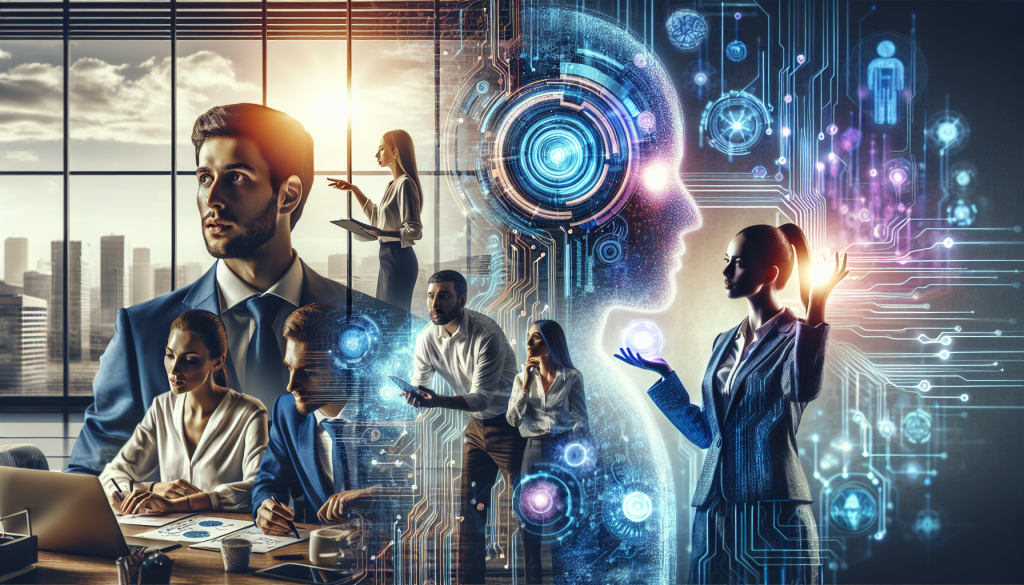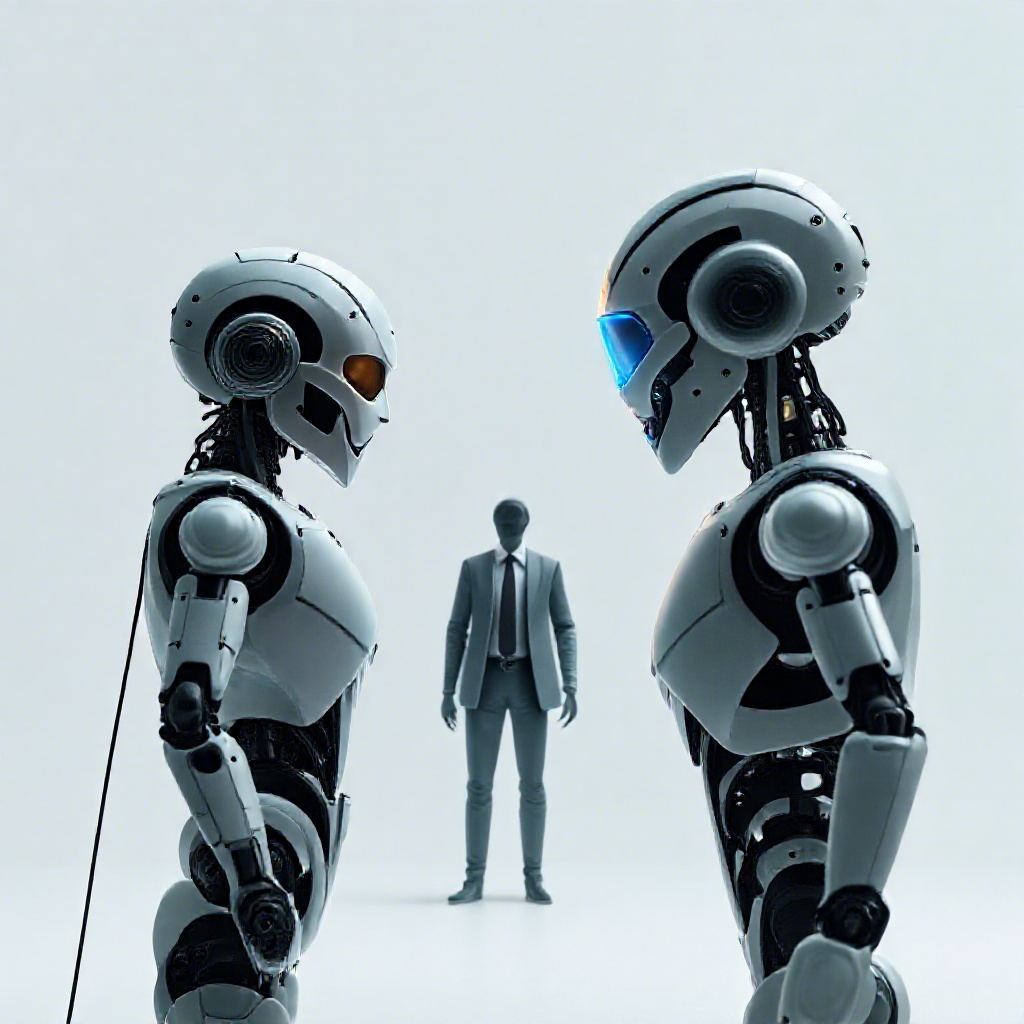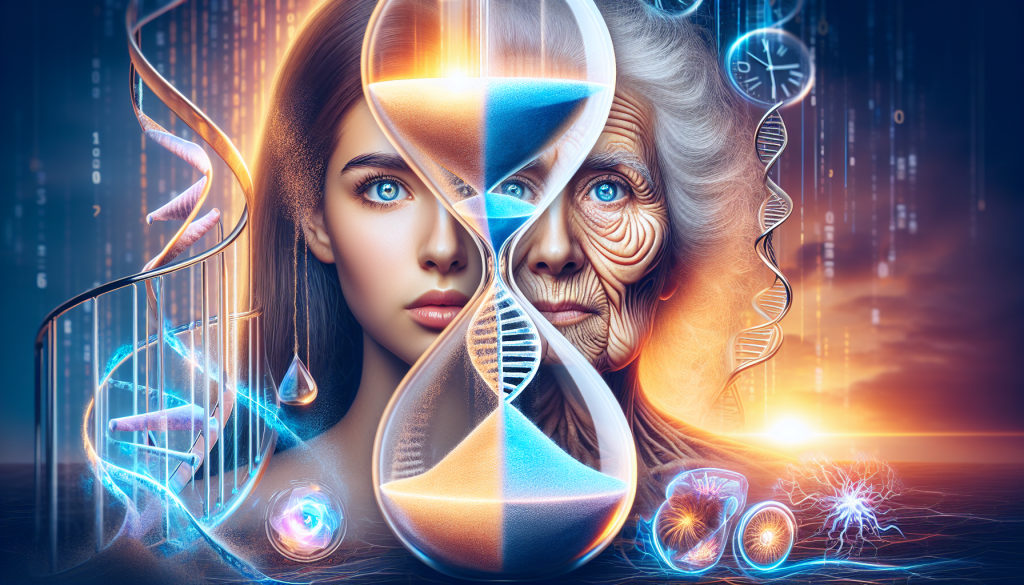In this article, we’ll dive into the current state of AI and social inequality, exploring how AI systems might unintentionally make income disparity worse. But don’t worry, it’s not all doom and gloom! We’ll also check out ways we can use AI to bridge the digital divide and level the playing field. I’ll share some ideas on AI policy and how we can make sure the benefits of technological change are shared more fairly. So, let’s roll up our sleeves and figure out how to make AI work for everyone, not just a lucky few.
The Current State of AI and Social Inequality
As I delve into the current state of AI and social inequality, I can’t help but notice the complex interplay between technological advancement and societal disparities. Let’s break this down and explore the key aspects that are shaping our world today.
Economic impact of AI
AI is making waves in our economy, and it’s not just a ripple – it’s more like a tsunami of change. Many see AI as a powerhouse for productivity and economic growth. It’s like having a super-efficient assistant that can crunch numbers, analyze data, and make decisions faster than we ever could. This efficiency boost could lead to the creation of new products, services, and even entire industries 1.
But here’s the kicker: while AI might be a boon for some, it could also widen the gap between the haves and have-nots. North America and China are expected to be the big winners in the AI game, with Europe following close behind. Developing countries, on the other hand, might see more modest gains due to lower AI adoption rates 1.
Job displacement concerns
Now, let’s talk about jobs. It’s the elephant in the room whenever AI comes up. The truth is, AI could have a significant impact on employment. In advanced economies, about 60% of jobs might be affected by AI 2. That’s a pretty big number, right?
But it’s not all doom and gloom. About half of these jobs might actually benefit from AI integration, becoming more productive. The other half? Well, that’s where things get tricky. AI could potentially take over key tasks, leading to lower wages or even job losses in some cases 2.
Interestingly, emerging markets and low-income countries might face less immediate disruption, with AI exposure expected to be 40% and 26% respectively 2. But this could be a double-edged sword – while they might not face immediate job losses, they also might miss out on the productivity gains that AI can bring.
Geographical disparities in AI development
Speaking of disparities, let’s zoom out and look at the big picture. The benefits of AI aren’t spread evenly across the globe. In fact, they’re pretty concentrated in what we call the Global North 3.
In the U.S., for example, AI development is highly concentrated in a few areas. The Bay Area and 13 early adopter regions make up over half of the nation’s AI activities 4. This concentration could lead to the creation of “super firms” – hubs of wealth and knowledge that might have a significant impact on the wider economy 1.
But what about the rest of the world? Well, many countries in the Global South face significant barriers to AI adoption. These include lack of technical infrastructure, limited access to data, and a shortage of skilled talent 3. Without addressing these issues, the AI revolution could end up widening the gap between developed and developing nations.
In conclusion, as we navigate this AI-driven landscape, it’s clear that we’re facing both exciting opportunities and significant challenges. The key will be finding ways to harness the power of AI while ensuring its benefits are shared more equitably across society and around the globe.
AI’s Potential to Exacerbate Inequality
As I dive deeper into the world of AI, I can’t help but wonder about its potential to widen the gap between the haves and have-nots. Let’s explore how AI might exacerbate inequality and what it means for our society.
Automation and job loss
You know, it’s not all doom and gloom when it comes to AI and jobs. Some experts believe that automation often creates as many jobs as it destroys over time. Workers who can team up with machines tend to be more productive, which can lead to lower prices and more spending. This, in turn, can create new jobs 5.
But here’s the catch: not everyone comes out on top. Some workers might find themselves in a tough spot, especially those directly replaced by machines or now competing with them. Since the 1980s, digital automation has been adding to labor market inequality. Many production and clerical workers have seen their jobs disappear or their wages take a nosedive 5.
It’s like a game of musical chairs, but with jobs. New positions are popping up, some of which pay well for highly educated analytical workers. But others, like those in personal services, come with much lower wages 5.
Concentration of wealth and power
Now, let’s talk about how AI might concentrate wealth and power even further. It’s like a snowball effect. As AI systems become more advanced, they could start taking up a larger share of production in the industries where they’re used. This might lead to bigger productivity gains in the future 6.
Here’s the kicker: in sectors where AI significantly cuts production costs, businesses might decide to trim their workforce if consumer demand doesn’t keep up with the productivity boost. This could result in job losses and lower wages in affected industries 6.
What’s more, AI could shift more compensation from workers to business owners. These owners might enjoy higher profits with less need for labor 5. It’s like the rich getting richer, while the rest of us are left scratching our heads.
Skill-biased technological change
Let’s break down this fancy term “skill-biased technological change” or SBTC. It’s basically the idea that new tech, like computers and AI, tends to favor skilled workers over unskilled ones 7.
Here’s an interesting tidbit: from 1970 onwards, tech advances – mainly via computers – began to drive a wedge between white and blue-collar workers. The invention of the computer chip in 1973 was a game-changer, making university degrees a must-have for effectively using information and communication technology (ICT) 8.
But here’s where it gets really interesting. While ICT has been un-equalizing so far, some experts think that generative AI might flip the script. It could actually boost the productivity of less-skilled workers in advanced economies, potentially leading to a more equitable distribution of income 8.
However, we’re not out of the woods yet. In the near term, AI-driven productivity boosts could still skew towards high-income workers, leaving lower-wage workers behind. And in the slightly longer term, AI-driven labor automation could increase the share of income going to capital at the expense of labor 6.
Leveraging AI to Bridge the Digital Divide
As we explore ways to harness AI’s potential for good, I’m excited to share some promising avenues that could help bridge the digital divide. Let’s dive into how AI can be a game-changer in education, democratize access to powerful tools, and drive initiatives for social good.
AI-powered education and skill development
You know, I’ve always believed that education is the great equalizer, and AI is taking this to a whole new level. Imagine a world where every student gets a personalized learning experience tailored to their unique needs and learning style. Well, that’s exactly what AI is making possible.
AI-powered adaptive learning platforms are analyzing student performance data and serving up targeted recommendations for content and activities. It’s like having a super-smart tutor who knows exactly what you need to work on 9. And it doesn’t stop there. We’re seeing intelligent tutoring systems that provide real-time feedback and assistance, supplementing traditional classroom instruction and making self-paced learning a reality 9.
But here’s where it gets really interesting. AI is not just helping students – it’s revolutionizing how teachers work too. AI-powered tools are supporting educators in creating interactive and engaging learning materials, like virtual reality simulations and educational games 9. It’s like giving teachers a high-tech Swiss Army knife for education.
And get this – AI is even helping with the not-so-fun parts of teaching, like grading. Natural language processing algorithms can analyze written assignments and provide feedback on grammar, style, and content 9. This frees up teachers to focus on what they do best – inspiring and guiding students.
Democratizing access to AI tools
Now, let’s talk about democratizing AI. It’s a fancy way of saying we’re trying to make AI accessible to everyone, not just the tech giants and big corporations. The idea is to level the playing field by lowering barriers to entry and enabling a more diverse group of people to develop, use, and benefit from AI 10.
But here’s the thing – just providing access isn’t enough. We need to ensure that people have the knowledge and resources to actually use these tools effectively 10. It’s like giving someone a fancy sports car without teaching them how to drive – not very useful, right?
We also need to be mindful of existing socioeconomic disparities. People living in regions with poor infrastructure or facing other access barriers might not have the same opportunities to benefit from AI 10. So, as we work on democratizing AI, we need to focus on addressing these underlying inequalities too.
AI for social good initiatives
Now, this is where things get really exciting. AI isn’t just for business – it’s being used to tackle some of the world’s most pressing challenges. The AI for Social Good (AI4SG) movement is all about using AI to address issues outlined in the United Nations’ 17 Sustainable Development Goals 11.
We’re seeing some really cool applications. For example, AI is being used to help identify and quantify online abuse against women on Twitter 11. In Uganda, researchers have developed an automated system to monitor viral cassava disease and set up an electronic agricultural marketplace 11. And get this – satellite imagery and AI are being used to predict poverty and identify burned-down villages in conflict zones 11.
But it’s not just about flashy projects. AI is also being used in more everyday ways to improve lives. In healthcare, AI is revolutionizing the diagnostic process. After a physical examination, doctors can input the results into a computer system that analyzes the data and suggests potential diagnoses and treatment plans 12. It’s like having a super-smart medical assistant at your fingertips.
As we continue to explore these possibilities, it’s crucial that we keep diversity, equity, and inclusion at the forefront of our efforts. By doing so, we can ensure that AI truly becomes a force for good, helping to bridge the digital divide and create a more equitable world for all.
Policy Recommendations for Inclusive AI
As we navigate the complex landscape of AI and its impact on society, I believe it’s crucial to implement policies that promote inclusivity and mitigate potential inequalities. Let’s explore some key recommendations that could help us create a more equitable AI-driven future.
Ethical AI development guidelines
First things first, we need to establish clear guidelines for ethical AI development. It’s not just about creating powerful algorithms; it’s about ensuring they’re fair, transparent, and respect our fundamental rights. The European Union has taken a step in the right direction with their Guidelines for Trustworthy AI, which emphasize that AI systems should be lawful, ethical, and robust 13.
Key principles we should focus on include transparency, explainability, fairness, non-discrimination, privacy, and data protection 14. It’s like building a house – we need a solid foundation of ethics before we start constructing our AI systems.
Redistributive policies
Now, let’s talk money. As AI continues to reshape our economy, we need to think about how we can fairly distribute its benefits. One interesting approach is to use fiscal policy instruments to reduce inequality, even if it might slow down growth a bit in the long run 15.
Here’s a thought: what if we taxed the excess profits of firms with market power in the automated economy? It could be an efficient way to address the equity-efficiency tradeoff 15. It’s like Robin Hood, but for the digital age!
Investment in digital infrastructure
Last but not least, we need to invest in digital infrastructure, especially in developing countries. This is where public-private partnerships (PPPs) can really shine. By combining the private sector’s financial resources and market insights with government priorities, we can create optimal outcomes for everyone involved 16.
For example, at the SDG Action Weekend in 2023, UN member states and other entities pledged a whopping $400 million for the High Impact Initiative on Digital Public Infrastructure 16. It’s like a global potluck, where everyone brings something to the table to create a feast of digital opportunities.
Remember, as we implement these policies, we need to keep diversity, non-discrimination, and fairness at the forefront. AI systems should be accessible to all, regardless of any disability, and involve relevant stakeholders throughout their entire life cycle 13. It’s about creating an AI future that works for everyone, not just a select few.
Conclusion
As we wrap up our exploration of AI’s impact on social inequality, it’s clear that this technology has a profound influence on our society. AI’s potential to boost productivity and economic growth is undeniable, but so is its capacity to widen existing gaps if not managed carefully. The key lies in harnessing AI’s power to bridge the digital divide, from revolutionizing education to democratizing access to powerful tools and driving initiatives for social good.
Moving forward, it’s crucial to implement policies that promote inclusive AI development and address potential inequalities. By establishing ethical guidelines, considering redistributive policies, and investing in digital infrastructure, we can work towards a future where AI benefits everyone. To dive deeper into the world of AI and its potential, check out my AI Startup School (https://sistemist.com/project/ai-startup-school/) course and its application project Otonom Fund (https://projectotonom.com/en/), a blockchain launchpad and accelerator for AI startups. Together, we can shape an AI-driven future that’s fair, inclusive, and brimming with opportunities for all.
FAQs
How does artificial intelligence (AI) influence the digital divide?
- Artificial intelligence has the capability to either diminish or exacerbate the digital divide. Recognizing AI’s potential to widen this divide is crucial in addressing and mitigating the challenges it poses before they intensify.
What effect does AI have on social and economic inequality?
- The advancement of AI could potentially shift economic benefits from labor to capital, leading to automation. This shift is not the sole way AI may contribute to increased income inequality, but it is a significant factor.
What are the consequences of bridging the digital divide?
- Bridging the digital divide, while beneficial in enhancing communication and operational efficiency, can unintentionally increase income disparities, especially in developed economies.
In what ways does the digital divide exacerbate social inequality?
- The digital divide can significantly hinder economic opportunities for individuals and regions lacking digital connectivity. Those without digital skills may find it difficult to secure higher-paying jobs, and regions without reliable broadband access may struggle with economic development.
References
[1] – https://www.europarl.europa.eu/RegData/etudes/BRIE/2019/637967/EPRS_BRI(2019)637967_EN.pdf
[2] – https://www.imf.org/en/Blogs/Articles/2024/01/14/ai-will-transform-the-global-economy-lets-make-sure-it-benefits-humanity
[3] – https://www.weforum.org/agenda/2023/01/davos23-ai-divide-global-north-global-south/
[4] – https://www.brookings.edu/articles/the-geography-of-ai/
[5] – https://www.brookings.edu/articles/understanding-the-impact-of-automation-on-workers-jobs-and-wages/
[6] – https://www.brookings.edu/articles/ais-impact-on-income-inequality-in-the-us/
[7] – https://davidcard.berkeley.edu/papers/skill-tech-change.pdf
[8] – https://www.linkedin.com/pulse/ai-skill-biased-technical-change-twist-richard-baldwin-ha0ke
[9] – https://www.linkedin.com/pulse/role-ai-shaping-future-education-skills-development-wainwright-nqu9e
[10] – https://www.linkedin.com/pulse/democratizing-ai-equal-equity-meenakshi-meena-das-ac5af
[11] – https://www.nature.com/articles/s41467-020-15871-z
[12] – https://www.techuk.org/resource/ai-and-society-a-case-study-on-positive-social-change.html
[13] – https://digital-strategy.ec.europa.eu/en/library/ethics-guidelines-trustworthy-ai
[14] – https://transcend.io/blog/ai-ethics
[15] – https://www.imf.org/en/Blogs/Articles/2021/11/18/sharing-the-gains-of-automation-the-role-of-fiscal-policy
[16] – https://www.csis.org/analysis/advancing-digital-transformation-and-digital-public-infrastructure-role-private-sector
A Note on AI Assistance
This blog post was crafted with the assistance of AI, under my careful direction and editorial supervision. As an author, I believe in embracing innovative tools to enhance the quality, depth, and speed of my research, while maintaining the highest standards of integrity and originality. Consider it similar to the relationship between a professor and a PhD candidate doing research under his guidance. Please also bear in mind that the solutions I use are specifically trained with “my style”, based on my older writings, so they are not generic LLMs. They are model-agnostic as well, meaning, I am not bound by the output of any specific LLM and its flaws.
Here’s what you should know:
- Topic Selection & Direction: The themes, ideas, and overall direction of this post are entirely my own. AI serves as a tool to help articulate and expand upon my concepts.
- Editorial Oversight: Every word has been reviewed, edited, and approved by me. The final content reflects my voice, opinions, and expertise.
- Quality Assurance: I’ve ensured that all information presented is accurate, relevant, and valuable to you, my readers.
- Ethical Use: My use of AI aligns with generally accepted ethical principles and policies in content creation. I’m committed to transparency about its involvement in my writing process.
- Original Insights: While AI assists in articulation, the unique perspectives, analyses, and conclusions in this post stem from my personal knowledge and experience.
- The Future of Writing: I believe that this collaborative approach between human creativity and AI assistance represents the future of content creation, allowing for richer, more comprehensive explorations of topics.
- Continuous Improvement: I’m constantly refining my process to ensure that AI enhances, rather than replaces, my authorial voice and expertise.
I’m excited to use these cutting-edge tools to bring you high-quality, insightful content. If you have any questions about my writing process or the use of AI in this post, please don’t hesitate to reach out.
Thank you for your readership and support as we navigate this exciting new frontier in AI-augmented life together!




